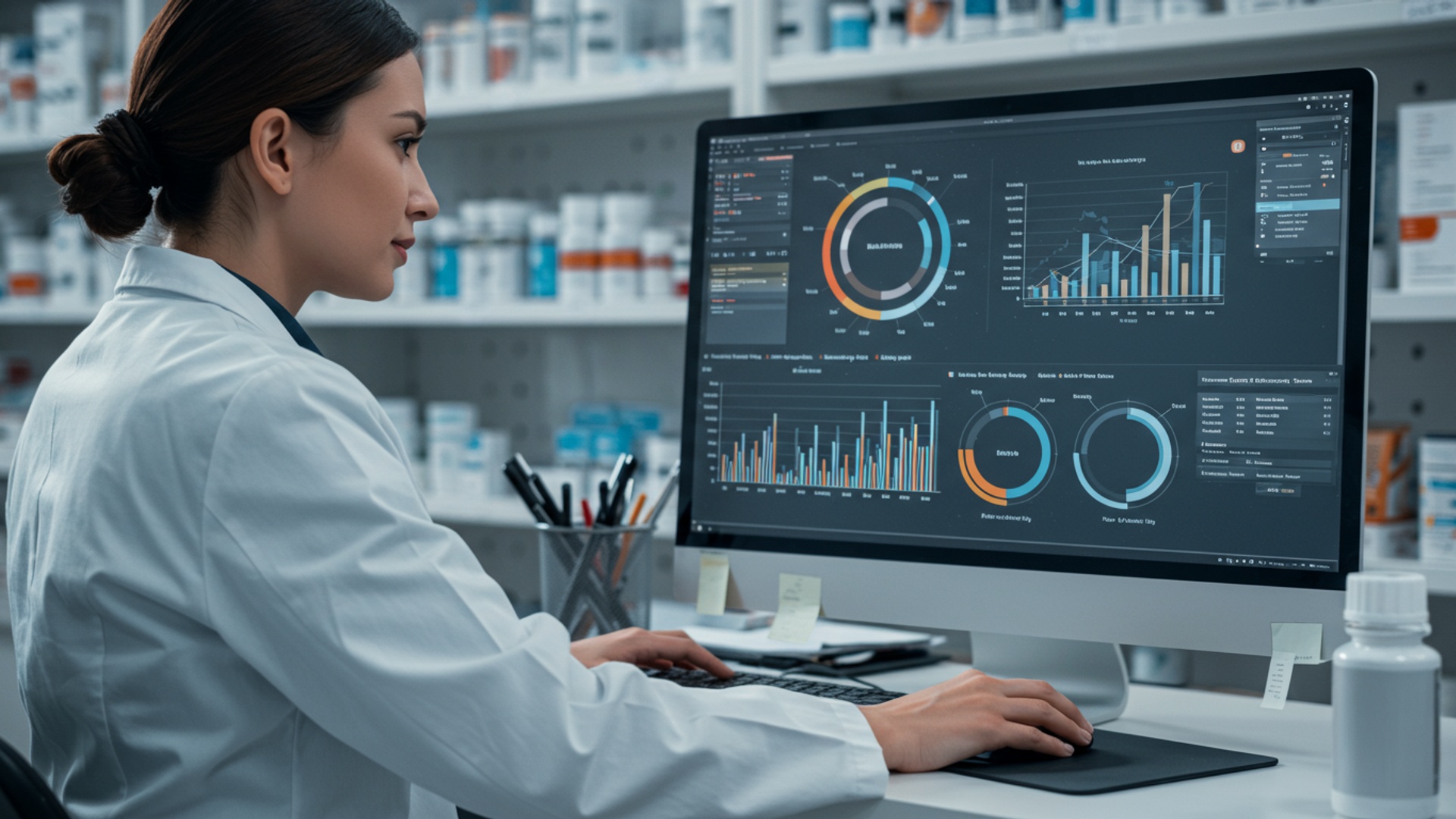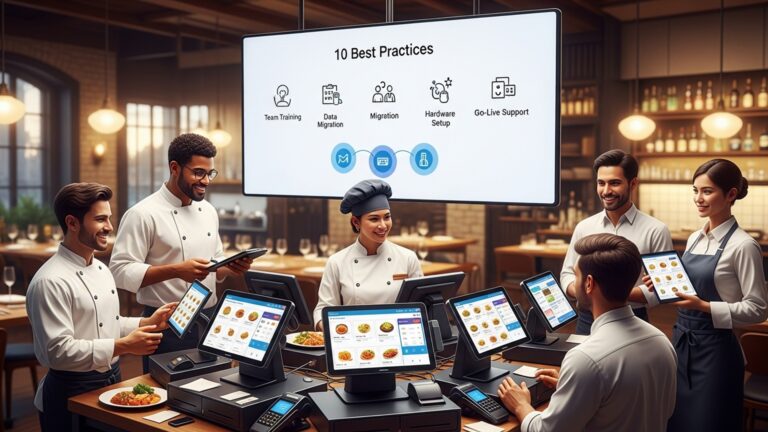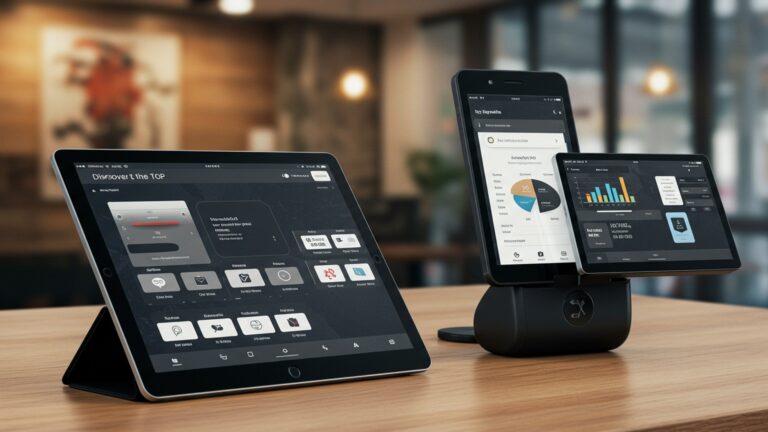Discover 8 Essential Tips for Optimizing Pharmacy Billing Software Use
In today’s intricate healthcare ecosystem, pharmacy billing software transcends mere transaction processing, evolving into a pivotal tool for financial health and patient experience. Pharmacies consistently face escalating complexities, from navigating intricate drug formularies and prior authorization hurdles to managing real-time benefit checks that significantly impact claim adjudication. Suboptimal use often results in costly denials, revenue leakage. increased administrative burden, directly affecting profitability. By unlocking the full potential of advanced pharmacy billing software – embracing features like automated reconciliation, predictive analytics for denial prevention. seamless integration with EHRs – operations shift from reactive problem-solving to proactive revenue cycle optimization. This strategic mastery is essential for thriving amidst evolving regulatory landscapes and increasing demands for efficiency.

1. Prioritize Comprehensive Training and Onboarding
- pharmacy billing software
- pharmacy billing software
- Initial Immersion
- Ongoing Education
- Role-Specific Training
Ensure all new staff members undergo a structured training program that covers the full scope of the pharmacy billing software. This should include practical exercises and scenarios mimicking real-world situations, such as processing different types of insurance claims (e. g. , commercial, Medicare, Medicaid) and handling common billing issues.
The healthcare landscape. thus billing regulations, are constantly evolving. Regular refresher courses and workshops are crucial to keep staff updated on new features, compliance changes (like new ICD-10 codes or payer-specific requirements). best practices for using the pharmacy billing software. Many software vendors offer webinars or updated documentation for this purpose.
Different roles within the pharmacy will interact with the software differently. Customize training modules for pharmacists, technicians. administrative staff to focus on the features most relevant to their daily tasks. For instance, a technician might focus on data entry and claim preparation, while a pharmacist might need to comprehend prior authorization workflows and clinical documentation requirements.
Investing in thorough training significantly reduces errors, improves claim accuracy. ultimately accelerates reimbursement cycles, directly impacting your pharmacy’s financial health. It also boosts staff confidence and job satisfaction.
2. Ensure Regular Software Updates and Maintenance
Like any critical technological tool, your pharmacy billing software requires consistent attention to remain efficient, secure. compliant. Neglecting updates can lead to security vulnerabilities, performance issues. non-compliance with evolving industry standards.
- Stay Current with Patches
- Leverage New Features
- Regular Database Maintenance
- Backup Protocols
Software vendors regularly release patches to fix bugs, enhance security. improve performance. Implement these updates promptly to protect sensitive patient and financial data from potential cyber threats.
Updates often include new functionalities designed to streamline workflows, improve reporting, or adapt to new billing codes and regulations. Actively explore and integrate these new features into your daily operations to get the most out of your pharmacy billing software. For example, a new feature might automate a previously manual prior authorization step.
Over time, databases can accumulate redundant or fragmented data, slowing down the system. Schedule regular database clean-ups and optimization routines, often provided within the software or through your IT support, to ensure optimal speed and reliability of your pharmacy billing software.
Establish and rigorously follow data backup protocols. In the event of a system failure or data corruption, robust backups ensure that critical patient and billing insights can be quickly restored, minimizing operational downtime and financial loss.
Proactive maintenance ensures your pharmacy billing software operates at peak performance, safeguarding your data and ensuring seamless billing operations.
3. Master Claim Submission and Rejection Management
Efficient claim submission and effective management of rejections are paramount to maximizing revenue and minimizing administrative burden in pharmacy operations. Understanding the nuances of your pharmacy billing software in this area is critical.
- Pre-Submission Verification
- Accurate Data Entry
- Understanding Rejection Codes
- Streamlined Resubmission Process
- Payer-Specific Rules
Utilize the eligibility verification features within your pharmacy billing software. This allows you to confirm patient insurance coverage, co-pays. deductibles before a prescription is dispensed, significantly reducing claim rejections due to inactive coverage or incorrect patient data.
Emphasize precision in all data entry. Even minor errors, such as a misspelled name, incorrect date of birth, or transposed policy number, can lead to claim denials. Many modern pharmacy billing software solutions incorporate data validation tools to flag potential errors before submission.
Train staff to comprehend common rejection codes. Most pharmacy billing software will display these codes, often with explanations, directly on the rejected claim. Rapid identification of the reason for denial allows for quicker correction and resubmission.
Develop a clear, efficient process for addressing and resubmitting rejected claims. Your pharmacy billing software should allow for easy modification of claims and tracking of resubmission dates. Prioritize common or high-value rejections for immediate action.
Different payers have unique billing rules and requirements. Educate your team on these variations and how to configure your pharmacy billing software to meet them. This might involve specific modifiers, prior authorization requirements, or documentation guidelines.
By mastering these aspects, pharmacies can significantly reduce their denial rates, accelerate reimbursement cycles. improve overall financial health.
4. Leverage Automation Features for Efficiency
Modern pharmacy billing software is equipped with powerful automation features designed to reduce manual workload, minimize human error. accelerate billing processes. Fully utilizing these capabilities can transform your pharmacy’s operational efficiency.
- Automated Eligibility Checks
- Recurring Billing
- Auto-Populate Fields
- Task and Workflow Automation
- Batch Claim Submission
As mentioned, this feature can automatically verify patient insurance coverage in real-time or batch processes, saving staff time and preventing denials. The pharmacy billing software can flag issues before the claim is even prepared.
For patients on maintenance medications or chronic care programs, set up recurring billing within the pharmacy billing software. This automates the submission of claims for repeat prescriptions, ensuring timely billing without manual intervention for each refill.
Many systems can auto-populate patient demographics, insurance data. common prescription details once a patient is identified. This significantly speeds up data entry and reduces the chance of typographical errors.
Some advanced pharmacy billing software can automate workflows, such as automatically sending reminders for prior authorizations, flagging claims that require additional documentation, or routing specific claim types to designated staff members.
Instead of submitting claims one by one, utilize batch submission features to send multiple claims simultaneously. This is a massive time-saver for pharmacies with high prescription volumes.
Embracing automation allows your staff to focus on patient care and more complex billing issues, rather than repetitive administrative tasks, making your pharmacy billing software a true asset.
5. Integrate with Other Pharmacy Systems
A siloed approach to technology can create inefficiencies and data inconsistencies. Optimizing your pharmacy billing software often involves integrating it seamlessly with other essential pharmacy systems to create a unified ecosystem.
- Electronic Health Records (EHR) / Electronic Medical Records (EMR)
- Pharmacy Management Systems (PMS)
- E-Prescribing Platforms
- Inventory Management Systems
Integrating your pharmacy billing software with an EHR/EMR system allows for the automatic transfer of patient demographics, diagnoses. prescription insights. This eliminates redundant data entry, reduces errors. ensures that billing codes (like ICD-10) are consistent with clinical documentation.
A robust PMS integration connects prescription dispensing data directly to the billing module. This ensures that every dispensed medication is accurately billed. inventory levels are updated in real-time, preventing discrepancies.
Direct integration with e-prescribing platforms streamlines the prescription intake process and ensures that billing insights aligns perfectly with the prescriber’s order, reducing the likelihood of billing errors related to drug strength, quantity, or formulation.
While often part of a PMS, dedicated inventory systems can also be integrated. This ensures that drug costs are accurately reflected in billing and helps manage stock levels based on dispensed prescriptions, impacting profitability and reducing waste.
| Integration Type | Key Benefit | Impact on Pharmacy Billing Software |
|---|---|---|
| EHR/EMR | Reduced data entry, clinical-billing consistency | Automated patient/diagnosis data import, fewer claim rejections. |
| PMS | Seamless dispensing-to-billing flow | Accurate medication billing, real-time inventory updates. |
| E-Prescribing | Accurate prescription data intake | Minimizes prescription-related billing errors. |
Integrated systems create a single source of truth, reducing errors, improving data integrity. enhancing overall operational fluidity of your pharmacy billing software.
6. Implement Robust Data Security and Compliance Measures
In the healthcare sector, data security is not just a best practice; it’s a legal and ethical imperative. Your pharmacy billing software handles sensitive patient health data (PHI) and financial data, making robust security and compliance measures non-negotiable.
- HIPAA Compliance
- Access Controls
- Data Encryption
- Regular Security Audits
- Employee Training on Security
Ensure your pharmacy billing software and its usage strictly adhere to HIPAA (Health Insurance Portability and Accountability Act) regulations. This includes safeguarding PHI against unauthorized access, use, or disclosure. Verify that your software vendor is also HIPAA compliant.
Implement strong access controls. Not all staff members require access to every feature or all data within the pharmacy billing software. Assign role-based permissions to limit access to only what is necessary for each employee’s duties. Regularly review and update these permissions, especially when staff roles change or employees leave.
Ensure that all data, both in transit and at rest, is encrypted. This protects sensitive details from being intercepted or accessed by unauthorized parties. Your pharmacy billing software should offer robust encryption protocols.
Conduct periodic security audits and vulnerability assessments of your systems, including your pharmacy billing software. This helps identify potential weaknesses and ensures that your security measures are effective and up-to-date against evolving cyber threats.
Human error is often a weak link in security. Regularly train staff on data security best practices, phishing awareness, password hygiene. the importance of safeguarding PHI when using the pharmacy billing software.
Prioritizing data security and compliance builds patient trust, protects your pharmacy from costly legal penalties. maintains the integrity of your operations.
7. Utilize Regular Auditing and Reporting Features
Your pharmacy billing software is not just a tool for submitting claims; it’s a rich source of data that, when properly analyzed, can provide invaluable insights into your pharmacy’s financial health and operational efficiency. Leveraging its auditing and reporting features is crucial for continuous improvement.
- Performance Metrics
- Billing Error Identification
- Revenue Cycle Management (RCM) Analysis
- Payer Performance Analysis
- Compliance Auditing
Regularly generate reports on key performance indicators (KPIs) such as claim submission rates, denial rates, average days to payment. outstanding accounts receivable. This helps identify trends and areas needing attention.
Use the auditing tools within your pharmacy billing software to review claims for common errors before submission or to review patterns in rejected claims. This proactive approach can prevent future denials.
Generate reports that provide a holistic view of your revenue cycle. interpret where bottlenecks occur, from prescription intake to final payment. use this data to optimize processes.
Compare payment patterns and denial rates across different insurance payers. This can reveal which payers are most challenging to work with and might inform future contracting decisions or specific training needs for your team regarding those payers’ rules.
Use reports to ensure adherence to regulatory requirements and internal policies. This might include tracking specific billing codes or verifying proper documentation for certain services.
// Example of a conceptual report query in a pharmacy billing software
SELECT ClaimID, PatientName, PayerName, ClaimStatus, SubmissionDate, PaymentDate, (PaymentDate - SubmissionDate) AS DaysToPayment, RejectionReasonCode
FROM ClaimsData
WHERE SubmissionDate BETWEEN '2023-01-01' AND '2023-03-31'
ORDER BY DaysToPayment DESC;
This conceptual query illustrates how data can be extracted to examine claims, identify delays. pinpoint rejection reasons, enabling actionable insights to improve your pharmacy billing software usage.
Regularly reviewing these reports allows pharmacies to identify inefficiencies, correct billing discrepancies. make informed decisions to enhance profitability and compliance.
8. Maximize Vendor Support and Resources
Your pharmacy billing software vendor is a valuable partner in your success. Optimizing the use of their support, documentation. community resources can significantly enhance your team’s proficiency and resolve issues quickly.
- Utilize Help Desks and Technical Support
- Access Knowledge Bases and Documentation
- Engage with User Communities
- Participate in Webinars and Training Sessions
- Provide Feedback
When encountering complex issues or technical difficulties, don’t hesitate to contact your vendor’s support team. They possess in-depth knowledge of the pharmacy billing software and can provide efficient troubleshooting and solutions. Keep a record of support tickets for future reference.
Most reputable software vendors provide extensive online knowledge bases, user manuals, FAQs. video tutorials. These resources are excellent for self-help, training new staff. understanding specific features or workflows within the pharmacy billing software.
Many vendors host online forums or user groups where customers can share best practices, ask questions. offer solutions. This peer-to-peer interaction can provide practical insights and creative solutions that might not be found in official documentation.
Vendors frequently offer webinars on new features, regulatory changes, or advanced usage tips. Participating in these sessions can keep your team abreast of the latest developments and help you extract maximum value from your pharmacy billing software.
Don’t just consume resources; contribute. Provide constructive feedback to your vendor about the software’s functionality, user interface, or areas for improvement. This can influence future updates and make the pharmacy billing software even better for your pharmacy.
By actively engaging with your vendor’s support ecosystem, your pharmacy can ensure it is always making the most of its investment in pharmacy billing software, staying ahead of challenges. continuously improving billing operations.
Conclusion
Optimizing your pharmacy billing software isn’t merely about processing claims faster; it’s about safeguarding your financial health and ensuring seamless patient care. I’ve personally seen how a proactive approach, like dedicating fifteen minutes daily to review reconciliation reports and pending claims within the software’s dashboard, drastically reduces denials and accelerates cash flow. This isn’t just an administrative task; it’s a strategic investment. To truly master your software, consistently leverage its advanced features such as real-time eligibility checks and automated claim scrubbing, which are becoming critical with the shift towards value-based care models. Don’t wait for issues to arise; instead, proactively engage with your system. For instance, ensure your team is regularly trained on updates and new interoperability features, as outdated practices are often the silent culprits behind billing errors. Embrace these actionable tips. you will transform your billing process from a potential bottleneck into a powerful, efficient engine driving your pharmacy’s success.
More Articles
Discover 7 Key Benefits of Pharmacy Management Software for Efficiency
Discover 7 Essential Features for Pharmacy POS Software Success Guide
Discover the 7 Best Pharmacy POS Software Solutions to Optimize Your Operations
How to Select the Perfect POS Billing Software for Your Business
How to Master POS Billing Software for Efficient Retail Operations
FAQs
Why bother optimizing our pharmacy billing software?
Optimizing your pharmacy billing software isn’t just about making things run smoother; it significantly reduces claim rejections, speeds up reimbursements. frees up your staff to focus more on patient care. Ultimately, it boosts efficiency and your pharmacy’s financial health.
How crucial is staff training for getting the most out of our billing software?
Super crucial! Well-trained staff can navigate the software effectively, minimize errors. fully utilize all its features. Regular training ensures everyone’s up-to-date with new functionalities and best practices, directly impacting billing accuracy and speed.
Should we really keep our billing software updated all the time?
Absolutely! Keeping your software updated is vital. Updates often include critical bug fixes, security patches. new features that keep you compliant with evolving healthcare regulations and enhance the software’s overall performance and capabilities. Don’t skip them!
What’s the biggest thing we can do to avoid claim rejections?
Focusing on data accuracy is key. Incorrect patient insights, wrong drug codes, or missing details are common culprits. Double-checking every entry and utilizing features like automated validation can drastically cut down on rejections and resubmissions.
Can our billing software help us grasp our pharmacy’s financial health better?
Definitely! Most modern billing software comes with robust reporting tools. You can generate reports on claim statuses, reimbursement trends, outstanding balances. more. Analyzing these reports provides valuable insights to make informed business decisions and identify areas for improvement.
How vital is it for our billing software to talk to other pharmacy systems?
It’s pretty vital! When your billing software integrates seamlessly with your dispensing system or EHR, it reduces manual data entry, minimizes errors. creates a more streamlined workflow across your entire pharmacy operation. It saves both time and headaches.
What about keeping our patient data safe in the billing system?
Data security is paramount. Ensure your software has strong security features, regular data backups are performed. access controls are properly managed. This protects sensitive patient data and helps maintain compliance with crucial privacy regulations like HIPAA.
Is there a simple way to make our billing process more efficient overall?
Yes, regularly review your current billing workflow. Identify any bottlenecks or repetitive tasks that could be automated or streamlined by leveraging your software’s existing features. Sometimes, even a small change in process can lead to significant efficiency gains and less stress for your team.





